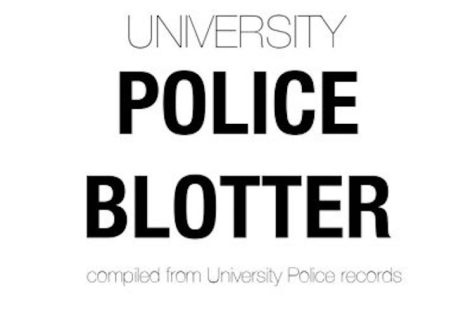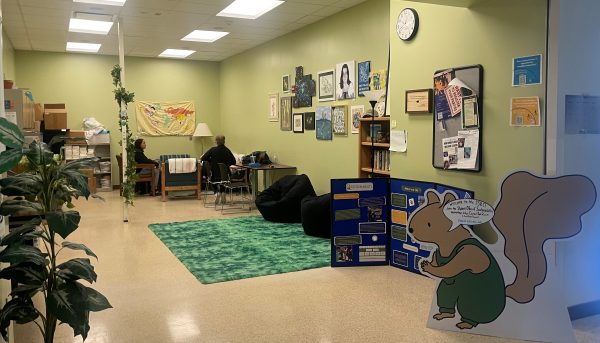Smokers and non-smokers: finding common ground
Photo by Elizabeth Jackson
A UWEC student stops to smoke in a designated area and poses before heading to their next class. Photo Illustration.
In 2003, the clean air task force took effect to eliminate secondhand smoke and in 2011, former Chancellor Brian Levin-Stackevich recommended restrictions on smoking on UW-Eau Claire campus. This allowed designated smoking areas on campus but minimized the impact of secondhand smoke, according to a University Senate Committee status update in April 2011.
College students sometimes rush getting to the next class. Students don’t always have much time to grab a quick bite, and smokers want to get a quick cigarette in before they have to go sit for another hour.
UW-Eau Claire Dean of Students Joseph Abhold said both parties have a right just as long as they get along.
“People on both sides need to be polite and civil,” Abhold said.
Non-smokers and smokers need to be aware of each other and their obligations, he said. Managing smoking bans in large areas poses a difficult task. It is hard to enforce the campus as a whole, but it could “be conducted with people confronting each other.”
Smokers and non-smokers alike can now have some common ground to meet on and not offend one another, Abhold said.
Some smokers have expressed their feelings as being either respectful or indifferent if in designated smoking areas. However, most tobacco users are unaware of the many designated smoking areas on campus, Tom Gardner, an Eau Claire student, said. He said he normally finds a spot to hide when he wants to smoke.
“I don’t put myself into the position that would infringe of non-smokers rights,” Gardner said. “It’s poison, it’s deadly.”
Peggy O’Halloran is the director of the Center for Alcohol Studies and Education on campus. This program collects data from students on campus asking various questions about
alcohol, tobacco and drugs.
Most recent data shows about 19.9 percent of people in Wisconsin smoke and 18.4 percent do across the nation, according to Centers for Disease Control and Prevention.
In 2010, 21.3 percent of students on campus smoked tobacco. Two years later, the percentage fell to about 19 percent.
“These are less than all other colleges who use this survey,” O’Halloran said.
Jeremy Amundson, a senior and non-smoker on campus, said he feels smoking is a choice. He does not react negatively toward smokers, but he will avert them if he can.
“I do not want to infringe on their rights,” he said.
On the Eau Claire homepage, people can find the new smoking policy with a map to show these designated smoking areas.
“Creating a policy is important but educating (the) community is (the) next step,” Abhold said. “The community needs to know about the policy, how to follow it, and what to do if people aren’t following it.”






